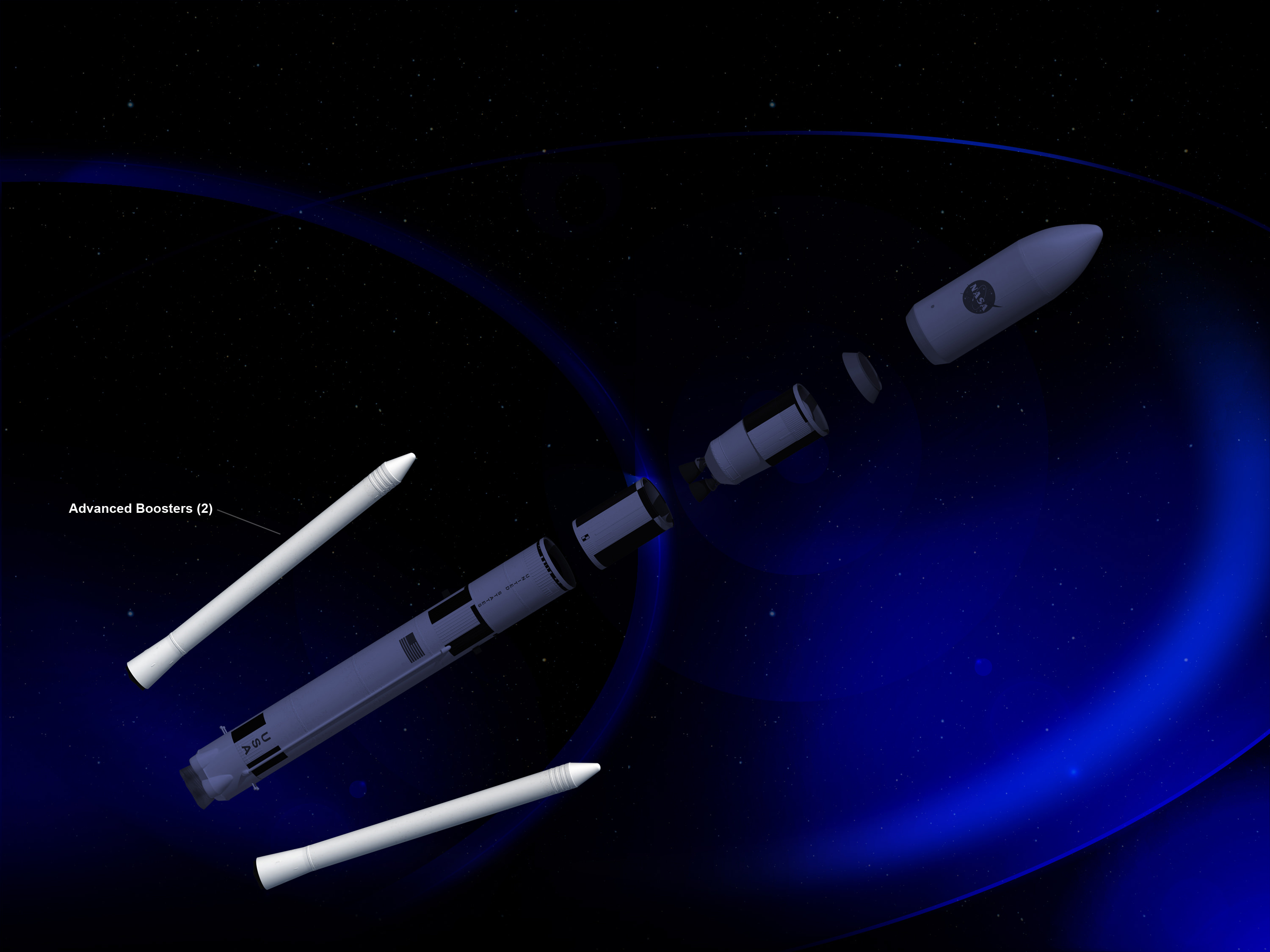

In 2011, America lost the ability to send humans into space when NASA retired the shuttle program. Lately, there has been a burst of news about the commercial side of spaceflight and how private companies such as SpaceX and VirginGalatic will soon be able to take over where the shuttle left off. But that doesn’t mean NASA has given up the ability to send people into space forever and recently the agency has taken a few steps toward regaining that ability.
The Space Launch System (SLS) is NASA’s new platform for launching both humans and cargo into Earth orbit and beyond. With an eventual expected payload capacity of 130 metric tons it will theoretically be the most powerful rocket ever built. On July 25th, it hit a major milestone when it was officially upgraded by an independent review board from the “concept development“ phase of the project to the “preliminary design“ phase.
“The in-depth assessment confirm the basic vehicle concepts of the SLS, allowing the team to move forward and start more detailed engineering design.“ William Gerstenmaier of NASA’s Human Exploration and Operations Mission Directorate said. This puts the system on the path to the next milestone: the preliminary design review expected late next year.
That design review will cover a system that will likely be comprised of two five-stage rocket boosters like those that were used on the space shuttle. Since those boosters were only capable of achieving low-Earth orbit, NASA needed to add some extra power to the SLS in order to reach deep space where many of its missions will take place. Their solution is what is known as an “advanced booster“, essentially a late-stage chemical rocket that will fire well into in the ascent of the craft and carry it out of Earth’s gravity well.
The design process of the advanced boosters hit its own milestone on July 13th when NASA announced it had selected the proposals it will use to begin contract negotiations for the development of the system. This is the first step of NASA’s procurement process, with a possible total contract of $200 million spread between the companies that receive finalized contracts. Those companies will likely come from the pool of those selected in this first step. They include, Aerojet General Corp, ATK Launch Systems Inc, Northrop Grumman Systems Corporation – Aerospace Systems and Dynetics, Inc. Dynetics, based out of Huntsville, Alabama, came out the winner for this round of the contract competition, with three of its proposals moved on to the contract negotiation phase while ATK, Aerojet and Northrop had one each. The names of the proposals are:
– “Subscale Composite Tank Set“ – Northrop Grumman
– “F-1 Engine Risk Reduction Task“ – Aerojet General Corp
– “F-1 Engine Risk Reduction Task“ – Dynetics Inc.
– “Main Propulsion System Risk Reduction Task“ – Dynetics Inc.
– “Structures Risk Reduction Task“ – Dynetics Inc.
– “Integrated Booster Static Test“ – ATK Launch Systems Inc.
The next step of the process will require the awardees to come up with engineering demonstrations and risk reduction concepts for their proposals. Over a 30-month period, the companies will have to demonstrate their technology prior to completion of the competition for contracts in 2015. Engineers at NASA will then have some time to integrate the advanced booster system with the other SLS modules before the first test launch of the entire system in 2017. While NASA might not be able to take humans to the stars for the next few years, they are making strides towards that goal.
Lead image caption: Components of the Space Launch System, highlighting the advanced boosters. Credit: NASA
Could a new, fifth force of nature provide some answers to our biggest questions about…
In 2015, the United Nations adopted the 2030 Agenda for Sustainable Development—the Sustainable Development Goals…
Astronomers have been battling threats to their clear skies on all fronts lately. One of…
If you were Captain of the first USS Enterprise, where would you go!? Humanity is…
Now is the best time to observe Mars in 2025. Mars from 2014. Credit: Paul…
Scheduled for launch in 2027, the Nancy Grace Roman Telescope is slowly being readied for…